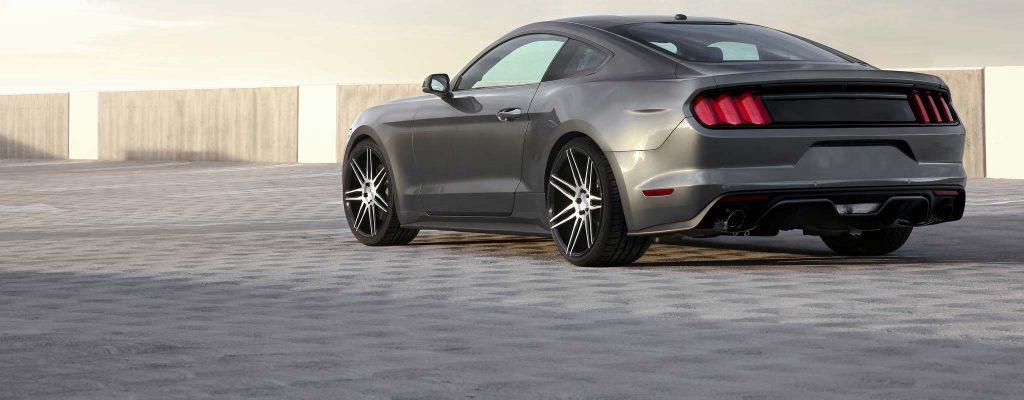Why Do Fast Cars Have Low Suspension?
By Sebastian Orellana
Updated Feb 18, 2024

The modern car industry is highly competitive, with manufacturers constantly striving to build faster vehicles with better performance. As car speed increases, so make the demands placed on the suspension system. One of the critical considerations when designing a car that can reach high speeds is the suspension, which is why fast cars often have low suspension.
Table of Contents
This post will explain why fast cars have low suspension and how it contributes to better performance. It will cover the types of suspension systems used for fast cars, the advantages and disadvantages of a low suspension, and their impact on the car's overall performance. It will also discuss how different suspension systems can be tailored to specific driving conditions and how this can improve the performance of a fast car.
READ: What Suspension Does Tesla Use?
Types of Suspension Systems

A car's suspension system is responsible for absorbing the force from the road, allowing the vehicle to maintain contact with the ground. The type of suspension system used on a vehicle can significantly impact its performance, particularly when it comes to high-speed driving.
Two fast cars use two central suspension systems: MacPherson strut and double wishbone. MacPherson struts are typically utilized on front-wheel-drive cars, while double wishbones are used on rear-wheel-drive vehicles. Both systems offer a high degree of control and stability. Still, double wishbones provide more flexibility, allowing the car to adapt to different terrain and maintain better contact with the road.
Advantages of Low Suspension

Low suspension offers several advantages for fast cars, including improved handling and traction. Low suspension allows the vehicle to stay closer to the ground, providing a lower center of gravity and more excellent stability. This reduces the risk of the car becoming unstable at high speeds and improves traction by providing more grip on the road.
Handling
One of the main benefits of having a low suspension in a vehicle is improved handling. Lowering the suspension allows for a lower center of gravity, which allows the vehicle to corner better, and also increases the responsiveness of the steering. Lowering the suspension also enhances the car's road grip, meaning that the vehicle can take corners faster, and with more confidence.
Stability
Lowering the suspension also improves the vehicle's stability. A lower center of gravity reduces the amount of body roll and the risk of skidding, allowing for more control and a more comfortable ride. It also increases the overall structural integrity of the vehicle, providing more protection for the occupants in the event of an accident.
Fuel Efficiency
Another benefit of a low suspension is improved fuel efficiency. Lowering the suspension reduces the amount of drag on the vehicle, which in turn reduces the amount of fuel used. It also decreases the amount of weight the vehicle has to carry, allowing for a smoother ride and improved performance.
Smooth Ride

Finally, having a low suspension in a vehicle can provide a smoother ride. Lowering the suspension reduces the amount of road vibration and shock, meaning that the ride is much more comfortable, and can even help to reduce fatigue during long journeys.
The main disadvantage of low suspension is that it can reduce the ride's comfort. Low-suspension systems are designed to provide a better performance, but this comes at the expense of comfort. Low suspension can cause the car to feel bumpy and uncomfortable, particularly on rough roads.
Low suspension can also reduce the life of the car's suspension system, as it puts more strain on the components. This can lead to increased wear and tear, as well as increased maintenance costs. Low suspension can also reduce the car's ability to handle large bumps and potholes, which can cause the vehicle to become unstable.
Impact on Performance

Low suspension can have a significant impact on the overall performance of a fast car. It can reduce the risk of the vehicle becoming unstable at high speeds and provide better control and traction. Low suspension can also reduce the time it takes for the car to accelerate and decelerate, improving its cornering ability.
However, it's important to remember that low suspension is not the only factor affecting a car's performance. The car's engine, transmission, and tires all play a role in determining its performance. Considering these factors is essential when choosing the right suspension system for a fast car.
READ: How Much Horsepower Does An LS1 Have?
Tailoring Suspension Systems
Different suspension systems can be tailored to specific driving conditions, allowing the car to perform at its best. This can be especially useful for fast cars, as it can enable the vehicle to adapt to the changing terrain and maintain better contact with the ground.
By tailoring the suspension system, the car can be designed to handle a wide range of conditions, from smooth roads to rough terrain. This can improve the car's performance and help to reduce the risk of the vehicle becoming unstable at high speeds.
READ: What Is The Quickest Electric Car on the Market Today?
Conclusion
Fast cars require a suspension system that can handle the demands of high-speed driving. The low suspension offers several advantages, including improved handling and traction and better control. However, it can also reduce the ride's comfort and increase the wear and tear on the car's suspension system.
Tailoring the suspension system to specific driving conditions can help to improve the performance of a fast car and reduce the risk of it becoming unstable at high speeds.
